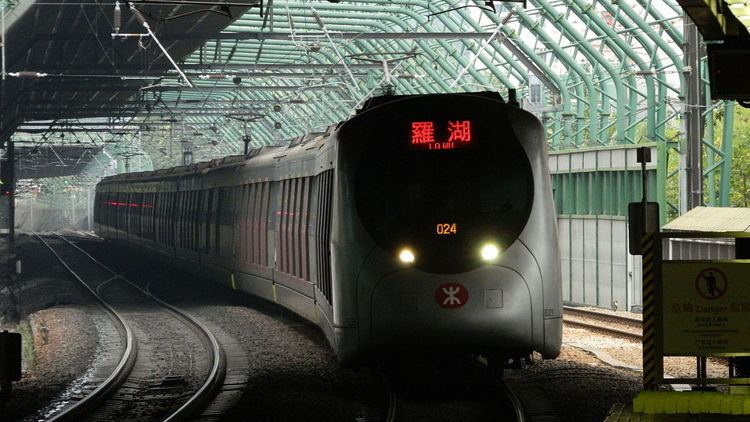 | ||
Hong Kong's rail network mainly comprises public transport trains operated by the MTR Corporation Limited (MTRC). The MTRC operates the metro network of Hong Kong and the commuter rail network connecting the northeastern and northwestern New Territories to the urban area. The operations of the territory's two leading railway companies, MTRC and the Kowloon-Canton Railway Corporation (KCRC), were merged in 2007 on grounds of economies of scale and cost effectiveness. The Hong Kong Government has an explicit stated transport policy of using the railway as its transport backbone.
Contents
- History
- MTR
- Trams
- Cross border services
- Automated People Mover
- Rail gauges and power supply
- List of densely populated places without rail transport
- Ended systems
- References
In addition to the MTR network, there are several smaller railways run by different operators, including the Peak Tram and the Hong Kong Tramways.
History
The first mode of rail transport was the Peak Tram, serving The Peak, the Mid-levels and the city centre since 1888. Tram started service along the northern coast of the Hong Kong Island in 1904. The British Section of the Kowloon-Canton Railway (now the KCR East Rail), a conventional railway, was opened in 1910. It was not until 1979 that a rapid transit system, the MTR, was opened. In 1982, the British Section of the Kowloon-Canton Railway began its transition towards electrification, changing it into a commuter rail, and eventually providing rapid transit-like service. The Light Rail Transit (LRT, now the MTR Light Rail) began its operation in the Tuen Mun and Yuen Long new towns in 1988. The two railway companies, MTR Corporation Limited and Kowloon-Canton Railway Corporation, merged on 2 December 2007, to form a single rapid transit network.
There are several extensions planned or under construction, including the Sha Tin to Central Link and the Guangzhou-Shenzhen-Hong Kong High Speed Railway.
MTR
The MTR network comprises 10 lines, 89 railway stations and 68 Light Rail stops:
This system makes about $2 billion in profit in 2014 which is mainly generated from its property holding and development business. Its portfolio include two of the city's tallest skyscrapers.
Trams
Note that the MTRC Light Rail system (see above) has many of the attributes of a tramway, including street running.
Cross-border services
Commonly known as Through Train (chi. 直通車), the MTRC and railway companies of mainland China jointly provide cross-border train services from Hung Hom Station, Kowloon, sharing most of the tracks with the East Rail Line, to destinations in mainland China through neighbouring Shenzhen on three Through Train routes, namely Beijing line (to/from Beijing), Shanghai line (to/from Shanghai) and Guangdong line (to/from Zhaoqing and Guangzhou East). They are operated through the rail network in mainland China, including the Guangshen Railway and Jingguang Railway.
Automated People Mover
There is an Automated People Mover (APM), a driverless electric train service, which is located at the basement level of Terminal 1 of Hong Kong International Airport. It travels the length of the 750-metre concourse between the East Hall and West Hall on a circular mode. Running at a speed of 62 km per hour, each APM carries 304 passengers in four cars. The APM operates every 2.5 minutes from 0600 to 0030 hours every day. It transports passengers whose flights are located at the West Hall, Southwest and Northwest concourses.
Rail gauges and power supply
Rail gauges and power supply of Hong Kong rails.
